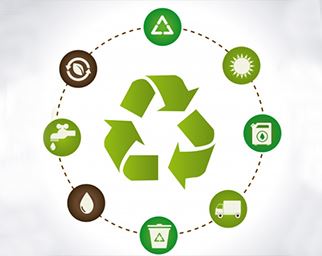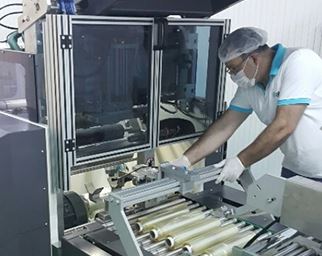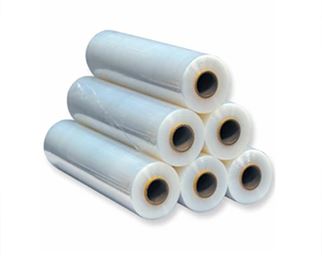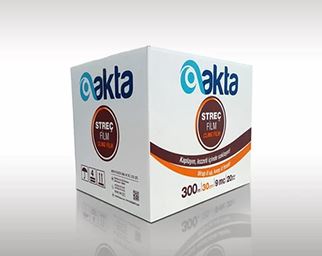Printed packing tapes are special types of tape used to seal cardboard boxes and ensure package security. These tapes are designed to include custom prints, messages, logos, or warning signs. Here are the advantages of using printed packing tapes:
-
Brand Awareness and Promotion: Printed packing tapes can feature your company's logo, name, or message. This is an effective way to increase brand awareness at every stage your package goes through.
-
Professional Appearance: Custom printed tapes help present your packages in a more professional and thoughtful manner. Customers may view careful packaging as a sign of quality and reliability.
-
Message of Trust: By adding custom messages or warning signs, you can convey important information about the package contents or potential tampering, thus reinforcing trust. This helps customers and recipients feel more confident about what’s inside.
-
Personalization: Printed tapes offer a great way to add personalized messages or thank-you notes for your customers, which can strengthen customer relationships.
-
Security and Anti-Counterfeiting: Custom printed tapes can enhance package security. If anti-counterfeit features are used in the design, you can emphasize that your packages are original and secure.
-
Identification and Organization: Printed tapes can help with identification and organization by indicating different product groups or delivery types. This can help optimize your logistics processes.
-
Cost-Effective Marketing: Printed packing tapes can be a low-cost marketing and promotional tool. The prints on your packages can help you reach a broader audience.
-
Memorability: Unique printed designs can leave a lasting impression on your customers. This can increase the likelihood of repeat purchases and referrals.
The advantages of printed packing tapes can vary depending on your business’s needs and goals. Using this type of tape can enhance your brand value and help you build stronger connections with your customers.

We would like to share with you the information we obtained from a publication by the European Aluminium Association.
Is aluminum foil recyclable?
Yes, aluminum foil and aluminum foil packaging are widely recyclable—especially in Europe. For aluminum packaging (including items like beverage cans that use aluminum as the primary material), the current estimated average recycling rate across Europe is around 60%. The amount of aluminum packaging that gets recycled heavily depends on the effectiveness of national packaging collection systems in each European country. National recycling rates for aluminum packaging across Europe vary between 30% and over 80%.
The metal in aluminum packaging is fully recyclable and can, in principle, be reused in the production of high-value aluminum products—such as automotive castings, construction materials, or even new packaging applications.
In cases where aluminum foil and foil packaging are not collected separately for recycling, they are disposed of along with household waste. In such situations, aluminum often goes through energy recovery processes. During incineration, part of the aluminum (especially thin and laminated foil) oxidizes and releases energy that is captured and converted into heat and electricity.
However, recent research has shown that a significant portion of thin aluminum foil in packaging does not oxidize completely, but rather melts and can be recovered from the bottom ash of the incinerator. These aluminum particles are increasingly being collected and sorted, returning to the “aluminum pool” for reuse. Using eddy current separation technology, these small aluminum fragments can be easily separated from the ash. An additional benefit of this process is that the residual ash, now free of non-ferrous metals, becomes more stable and can be reused in construction projects, such as road building.
The practice of collecting, recycling, and recovering product packaging after use returns valuable materials and energy back into circulation. Recycling recovered aluminum helps reduce our reliance on natural resources and ensures they are used more efficiently and sustainably.

Products that come into contact with food, such as cling film and aluminum foil, must be produced under special standards and conditions. Have you ever wondered in what kind of environments the aluminum foil and food cling film you use daily are produced and packaged? This information is often very difficult to find.
You have no choice but to trust the brand you purchase.
You can confidently purchase Akta Aluminum Foil and Akta Food Cling Film. Our aluminum foil and food cling films are produced in specially controlled rooms within our production facility. The physical conditions of these special rooms are designed with priority given to the hygiene standards of the foil and cling film.
Thanks to epoxy flooring, the foil and cling film are produced in a dust-free, easy-to-clean, antibacterial environment. The doors of the production areas are also equipped with special vacuum seals that prevent dust from entering, which is an important technical detail that helps maintain a clean environment.
The walls of the rooms where the foil and food cling film are produced are covered with easily washable paneling. This ensures full hygiene from floor to ceiling in the production rooms. Additionally, the dedication of our employees to hygiene during the production process further complements this effort.

The Unsolvable Chronic Problem of Pallet Stretch Film – Is It Really 300 Meters?
The answer to this question is something we, as conscientious manufacturers, are tireless in explaining. It is technically impossible for customers to precisely measure the 300-meter length of pallet stretch film. Unfortunately, this technical impossibility leads to oversights—not necessarily intentional misuse—that we wish to avoid calling abuse.
Manufacturers like us, out of respect and commitment to our work, consider it our duty to raise awareness among customers about this issue. Unfortunately, there is no industry standard regarding this matter. We regret to inform you that a significant portion of the pallet stretch film sold as 300 meters is actually 270m, 260m, or even 250m.
Our advice to pallet stretch film users is to carefully verify the technical specifications of the product during the purchasing process. But how can you know the actual length of a 300-meter pallet stretch film that you cannot measure directly? Below, we share a simple formula that you can easily use yourself. If you need assistance, Akta Plastik is always excited to share this information with you.
You can determine if the 300m pallet stretch film is truly 300 meters by weighing it. The calculation formula is as follows:
Product Weight = Density × Width × Length × Thickness / 100
-
Density of pallet stretch film: 0.918 g/cm³
-
Example: For a pallet stretch film that is 50 cm wide (the typical standard width), 300 meters long (seller’s claim), and 17 microns thick (also seller’s claim), the product weight calculation is:
0.918 × 50 × 300 × 17 / 100 = 2,340.9 grams
As you can see, the technical weight of a 300m pallet stretch film with these specifications must be 2,340.9 grams. This stretch film is wound around a cardboard core (masura). The weight of cardboard cores varies between 300-350 grams.
So, before purchasing one roll of pallet stretch film at 17 microns thickness, 50 cm width, and 300 meters length, you should weigh it. If the core weighs 300 g, the total weight should be about 2,640 grams; if the core weighs 350 g, it should be about 2,690 grams.
If you cannot weigh the product, please confirm the core weight and film weight information with the seller.
For Akta pallet stretch film at 17 microns thickness and 300 meters length, the net film weight is 2,340.9 g. With a 350 g core, the gross weight is 2,690.9 g.
Thanks to these calculations, you can now easily determine whether the pallet stretch film you purchase is truly 300 meters long or shorter.
Transparency, honesty, and correct product presentation are very important. At Akta Plastik, we take pride in offering our customers the right products. You can find brief and clear pallet stretch film product information in the table below.

The length and weight of food cling film can be calculated using the formula we share below with our valued customers. Thanks to this formula, you can be sure whether the cling film you purchased truly matches the promised length. The calculation formula is as follows:
Product Weight = Density × Width × Length × Thickness / 100
-
The density of food cling film: 1.24 g/cm³
For Akta Food Cling Film that is 30 cm wide, 9 microns thick, and 300 meters long, the film weight calculation is:
1.24 × 30 × 300 × 9 / 100 = 1,004.4 grams
The net weight of the cling film on a 30 cm Akta Food Cling Film roll is 1,004 grams. Including the cardboard core (masura) weighing 120 grams, the total gross weight is 1,124 grams.
Let’s also calculate the weight for a 45 cm wide food cling film:
1.24 × 45 × 300 × 9 / 100 = 1,506.6 grams
The net weight of the cling film on a 45 cm Akta Food Cling Film roll is 1,506.6 grams. Including the cardboard core weighing 170 grams, the total gross weight is 1,676 grams.
Thanks to these calculations, you can now easily understand whether the product you purchased is truly 300 meters or shorter.
Transparency, honesty, and correct product presentation are very important. At Akta Plastik, we take pride in offering our customers the right products. You can find our brief and clear product information in the table below.
Yes, polyethylene stretch film is generally a recyclable plastic material. However, the recycling process and accepted practices may vary depending on the country or region. The effectiveness of stretch film recycling depends on factors such as the types of materials applied to the film, exposure to contaminants or adhesives, and the capacity of local recycling facilities.
The typical recycling process of stretch film includes the following steps:
Collection and Separation: Used Akta pallet stretch films must be collected and kept separate from other types of plastic.
Washing and Cleaning: The collected stretch films are thoroughly cleaned to remove any dirt, dust, or adhesive residues.
Shredding: The cleaned stretch film is shredded into smaller pieces.
Reprocessing: These shredded materials can then be reused in the production of other plastic products.
Akta Stretch Film recycling in İzmir contributes to reducing plastic waste and minimizing negative environmental impact. However, for Akta pallet stretch film recycling to be effective, proper infrastructure for collection, sorting, and processing is essential.
Recycling methods and opportunities may differ by region. For more detailed and accurate information about the recyclability of stretch film, it is advisable to consult local recycling facilities or relevant authorities.
When determining the ideal thickness of stretch film, the following criteria should be carefully considered:
1. Weight (Tonnage) of the Packaged Product
The total weight of the product to be wrapped helps determine the appropriate film thickness:
For pallet loads under 545 kg, 12mc or 15mc thick Akta Manual Stretch Film or Akta Machine Stretch Film is suitable.
For pallet loads between 545 kg and 910 kg, 16mc or 20mc thick Akta Manual Stretch Film or Akta Machine Stretch Film is recommended.
For pallet loads above 910 kg, 23mc or thicker Akta Manual Stretch Film or Akta Machine Stretch Film should be used.
2. Pallet Stacking Pattern
The way cartons are stacked on the pallet—whether uniform or irregular—also plays a critical role in selecting the correct film thickness.
Uniform Stacking (Same-Sized Boxes):
For stacking boxes of identical dimensions on wooden pallets, 12mc to 15mc thick Akta Manual or Machine Stretch Film is suitable.
Irregular Stacking with Up to 8 cm Inset:
If different-sized boxes are stacked with up to 8 cm inset from the pallet edges, 16mc to 20mc thick Akta Manual or Machine Stretch Film is recommended.
Irregular Stacking with More Than 8 cm Inset:
If the stacking leaves more than 8 cm of inset from the pallet edges, then 23mc or thicker Akta Manual or Machine Stretch Film should be used.
Aluminum foil is an essential material for the food and pharmaceutical industries, everyday life, and packaging applications. It offers numerous unique advantages and characteristics. We would like to share with you some fascinating facts sourced from a publication by the European Aluminium Foil Association—did you know these?
Aluminum foil guarantees product quality by preventing aroma loss.
Just 1.5 grams of aluminum foil can preserve 1 liter of milk for months without refrigeration.
It provides a total barrier against moisture, light, and oxygen, locking in flavors.
75% of aluminum foil is used in packaging and household applications.
Throughout the supply and value chain, aluminum foil saves more resources than are used in its production.
Around 14 billion square meters (14,000 km²) of aluminum foil are used in flexible packaging production—equivalent to the size of Montenegro, one-third of the Netherlands, or five times the size of Luxembourg.
Widely used in laminates and packaging, aluminum foil enables products with total barrier protection.
Aluminum foil is 100% recyclable and retains its original properties during the process. As a result, 75% of all aluminum ever produced is still in use today.
Approximately 860,000 tons of aluminum foil are produced annually in Europe.
It protects contents from light, oxygen, moisture, and contamination.
The average per capita consumption of aluminum foil in Europe exceeds 26 m².
About 60% of aluminum packaging in Europe is recycled.


